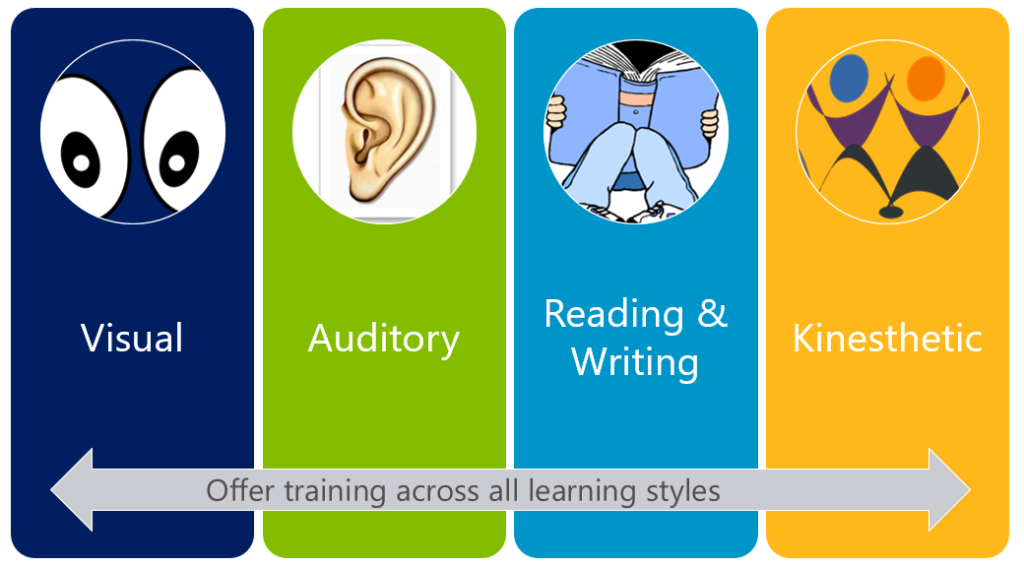Over the years, I’ve had a really great time diving into understanding adult learning styles and thinking about how I can apply that knowledge to end user training and developing training materials. It’s something I have become really passionate about and I truly enjoy discussing it. The first time I spoke publicly about learning styles and CRM was way back in 2017. It’s been a few years, and I’d love to revisit it with you.
VARK Learning Styles: Visual, Auditory, Reading & Writing, Kinethetic
Why are we even talking about learning styles?
Let me take you back in time – to 1999. Newly graduated from high school, I had absolutely no idea what to study in college. The idea of having summers “off” was hugely appealing to me, so I started my college career with an Elementary Education major. (I know teachers, you don’t get any time off – this was naïve 18-year old Heidi here!). While being a teacher didn’t end up being in the cards for me, I was truly fascinated when my studies turned to behaviors and learning styles. It stuck with me, that fascination, well beyond college.
So here we are, in 2021 talking about learning styles. Because understanding these four key ways adults learn can help us to plan and deliver useful, lasting training to our end users. It can also help us make better configuration decisions when architecting and implementing our systems that will enhance user adoption – which, after all, is the most important part of any technology.
VARK
There are many schools of thoughts surrounding learning styles. I like to incorporate the learning styles identified in the VARK model, which I have found to be accurate when looking at corporate training scenarios: Visual, Auditory, Reading & Writing, Kinesthetic. Simple, easy to understand and apply to Dynamics 365 and the Power Platform!

Visual Learners
Visual learners have a preference for visual depictions of information. This fits in well with our platforms, and you can incorporate things like graphs, diagrams, charts and patterns when training to reach these visual learners. Visual learners learn best by observing, seeing and watching. They will give you undivided attention when you’re presenting PowerPoints and live demos.
Auditory Learners
If your preference is auditory, you get the most out of the spoken word. Lectures, group discussions, webinars and chat bots are good for auditory learners.
Reading & Writing Learners
Text-based input and outputs are best for these learners. They enjoy manuals, reports, quotations and the written word in any way. Reading and writing learners are likely taking notes as they read this.
Kinesthetic Learners
These learners prefer first-hand experience, practice or simulation. Labs, case studies and UAT is excellent for these learners. Kinesthetic learners (like me!) are hands-on. They’re the people who tell you that this CRM thing sounds great, but they need to get their hands on it to play around.
Which learning style is your primary style?
Applying Learning Styles to CE Training
How can you use your amazing understanding of the VARK learning styles to your Dynamics 365 Customer Engagement training? Easy! Understand what sort of training approach reaches each style and pick and choose to combine into a beautiful training experience for your end users!
In a future blog, we will look at each learning style and point out some training techniques and methods that work well for each. After that, we’ll do a deeper dive on how you can use learning styles to help architect and implement your system to appeal to more users. This is going to be fun!!
